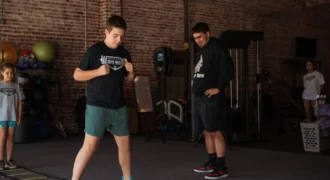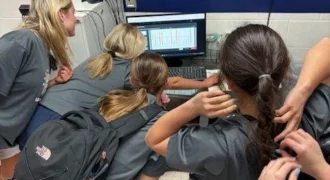Episode 2, Part 2 of The Fast Lane dives deep into the evolution of training templates & how great coaches move from simple early-career programs to refined, adaptive systems built around speed, neural readiness and longevity.
Hosts Chris Kerr, Chris Korfist, and Dan Fichter break down the principles that guide year-round planning, from in-season football to spring and winter track. What begins as a conversation on weekly templates unfolds into a masterclass on movement, coordination, and coaching evolution.
Key Topics
From the Early Days to Smarter Templates
- Korfist, Fichter, and Kerr reflect on their first training systems — bodybuilding splits, Husker Power, and overspeed bungee cords that left battle scars.
- Why early mistakes shaped their understanding of what actually works in performance training.
Year-Round Planning that Works
- How to structure the training calendar for football in the fall, indoor track in the winter, and outdoor track in the spring.
- Why acceleration is the foundation — and how the best programs blend it with targeted recovery and neural stimulation.
- How to maintain strength and movement quality all season without burning athletes out.
Strength, Isometrics & Neural Recovery
- How extreme yielding isometrics build resilient athletes in- and off-season.
- Fichter’s six-station “neural recovery” circuit: dorsiflexion glides, infinity walks, barefoot acceleration, balance perturbations, rebound pushups, and splayed walks.
- The art of keeping athletes neurologically sharp while preserving their nervous-system health.
Acceleration vs. Max Velocity
- Why acceleration is the deciding factor in sport performance — and why max-velocity work should be micro-dosed.
- The biomechanics of lean: getting your “heart over your hips” and your mass in front of your engine.
- Drills that connect the weight room to the field through forward lean, coordination, and posture under load.
Profiling, Force-Velocity & Data Feedback
- How Korfist uses 1080 Motion data to evaluate horizontal force, Newtons/kg, and RF Max.
- How Fichter applies timing gates and change-of-direction tests to measure acceleration quality.
- Using data as a feedback loop — and knowing when to rely on your coaching eye over the metrics.
As always make sure you stream this on Spotify, Apple Podcasts or right in the video above!
The post The Fast Lane Episode 2, Part 2 appeared first on SimpliFaster.






